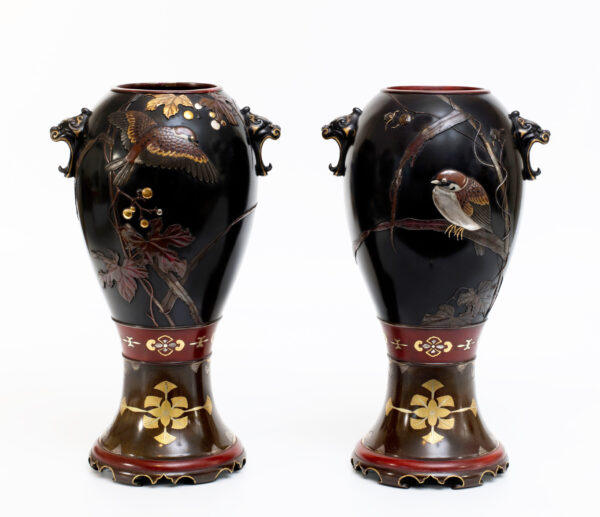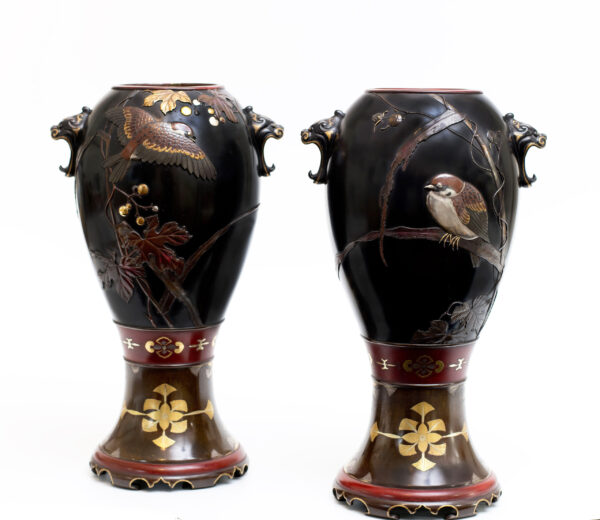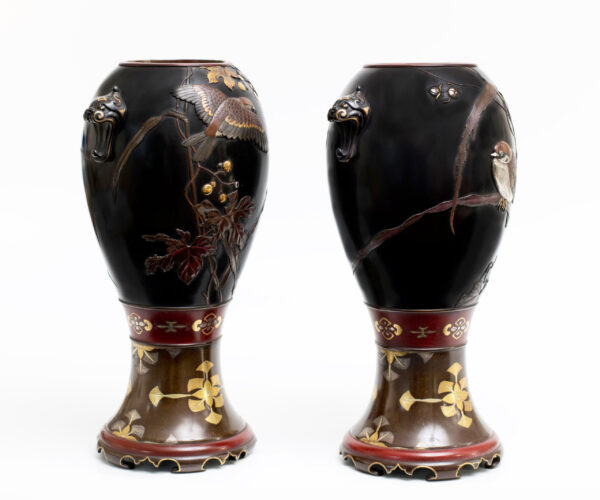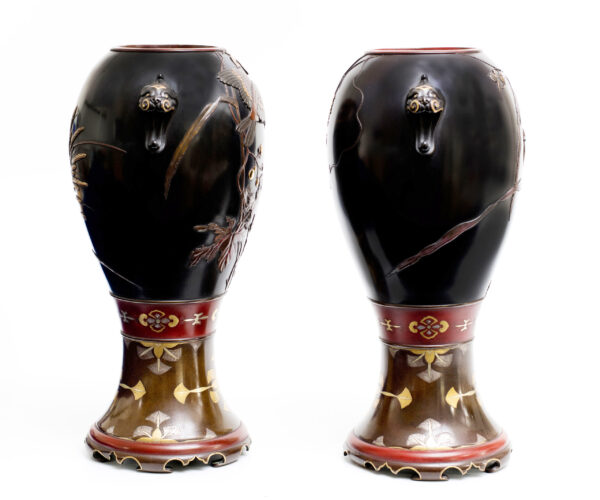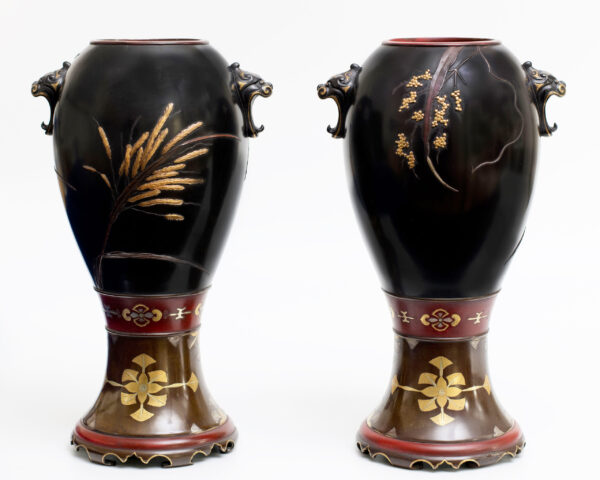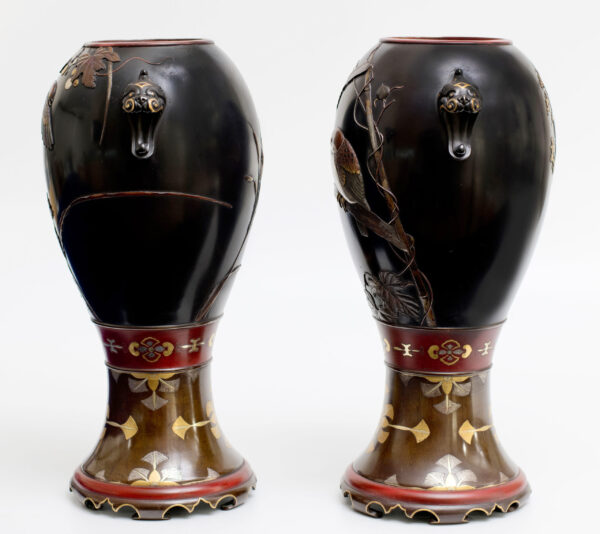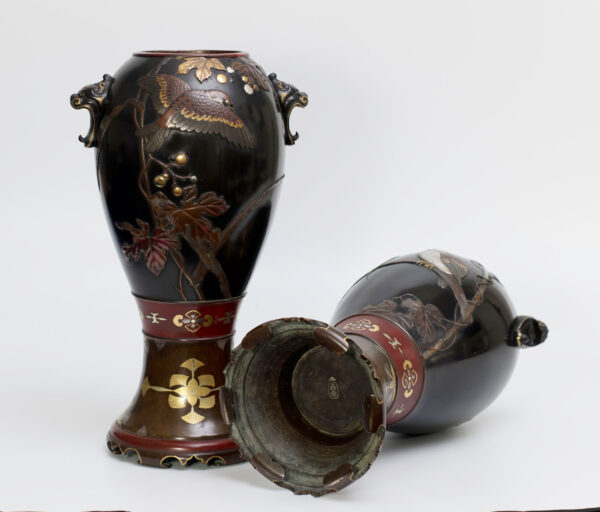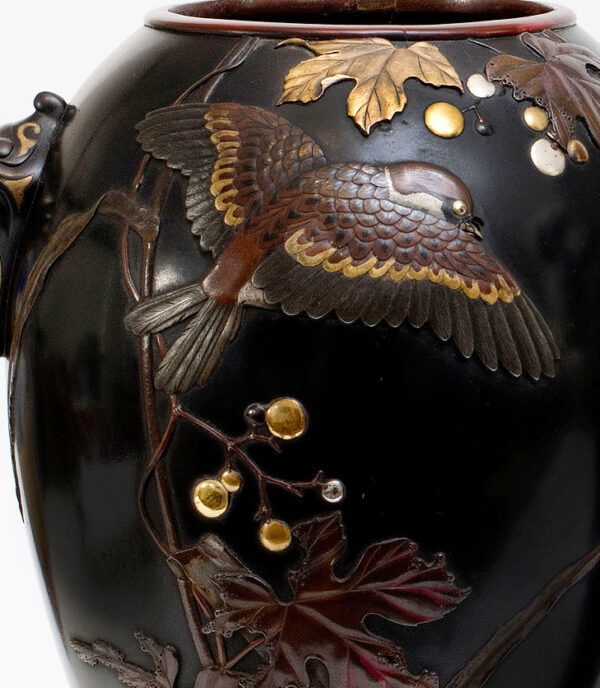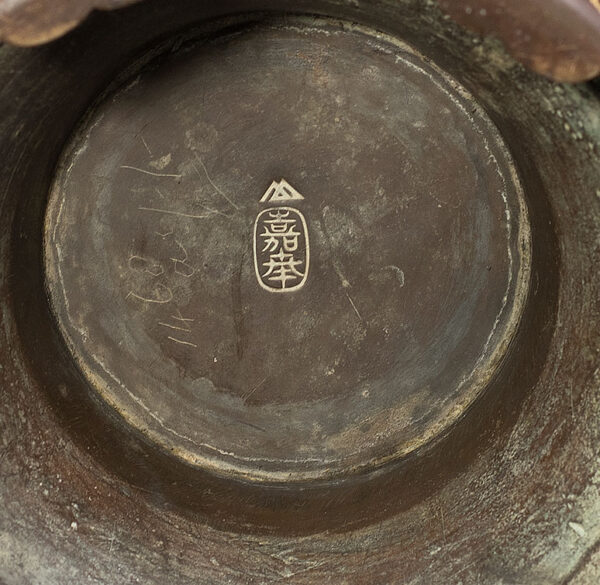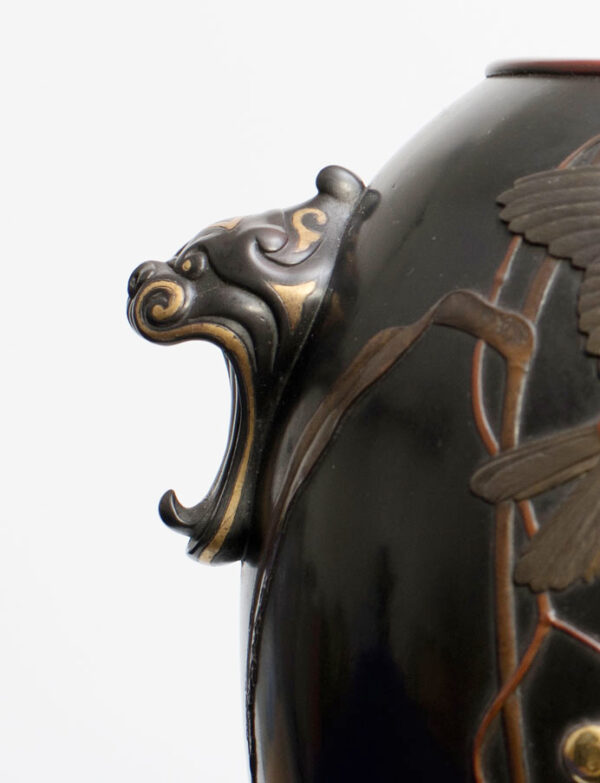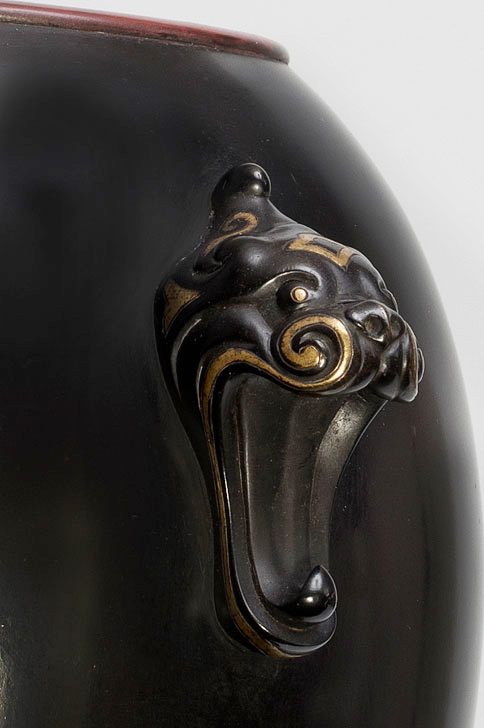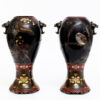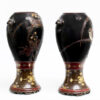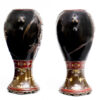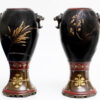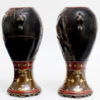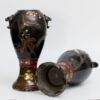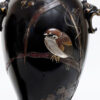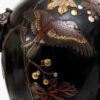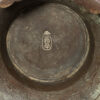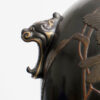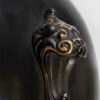As part of our Japanese works of art collection we are delighted to offer this most unusual pair of Meiji Period 1868-1912 mixed metal vases by the highly revered Imperial artist Suzuki Chokichi, his art name Kako, in the design of this large pair of mixed metal vases Chokichi has really expressed his artistic and technical abilities to the full, from the grotesque mask handles to the upturned folded feet he has cleverly caught the eye. The main subject matter is quite unremarkable and so typical of Chokichi, birds resting upon multi patinated and often decaying autumnal leaves and trees are executed in typical fine detail, particularly the feather work and finely rendered anatomy, pay particular attention to the birds feet and claws on the right hand vase, many of his contemporaries have tried to emulate Chokichi, and numerous good examples are recorded , but a Chokichi vase always stands out from the crowd. In this instance he has multi patinated the vase with the use of Shakudo and bronze alloys interspersed with a copper pink alloy for a complete contrast, the lower body uniquely highlighted with inlaid gold and silver stylized flora that would have been way ahead of its time and more akin to 1960’s abstract design.Each vase fully signed with the Suzuki Chokichi seal below the double mountain mark synonymous for the Kiritsu Kosho Kaisha, the first government sponsored metalwork company directed by Chokichi.
A rare and fascinating unique pair of vases for your Japanese metalwork collection .
Literature :
As previously stated Suzuki Chokichi (Kako) was director , designer and lead artist of the government sponsored Kiritsu Kosho Kaisha company until its closure in 1891 , his adventurous artistic ideas, as demonstrated in these vases, were reputedly not always well received by the government funded factory, they probably had one eye on commercial quantity and more repetitive works than Kako would have liked, he went on to produce many other individual high quality and now famous works housed around the worlds great collections and leading museums , including a monumental 2.8m Koro surmounted by an Eagle which resides in the Victoria and Albert museum, and arguably his most famous known work being a set of twelve mixed metal birds of prey, now rightfully resting in the Tokyo national museum .
Suzuki Chokichi’s work was eventually rewarded in 1896 when he was granted the rare accolade of becoming an Imperial artist ( Teishitsu Gigeiin ).
I am pleased to say his incredible artistic skills are being recognized some 120 years later, by leading collectors of Japanese Meiji period metalworks.
Condition Report :
Very good with minimal age related wear .
Approximate Sizes :
Height : 12 3/4″ 32.5 cm
Width : 7 7/8″ 20 cm
Depth : 6 1/8″ 16 cm
Free worldwide delivery and a certificate of authenticity are included within the price of this item.
